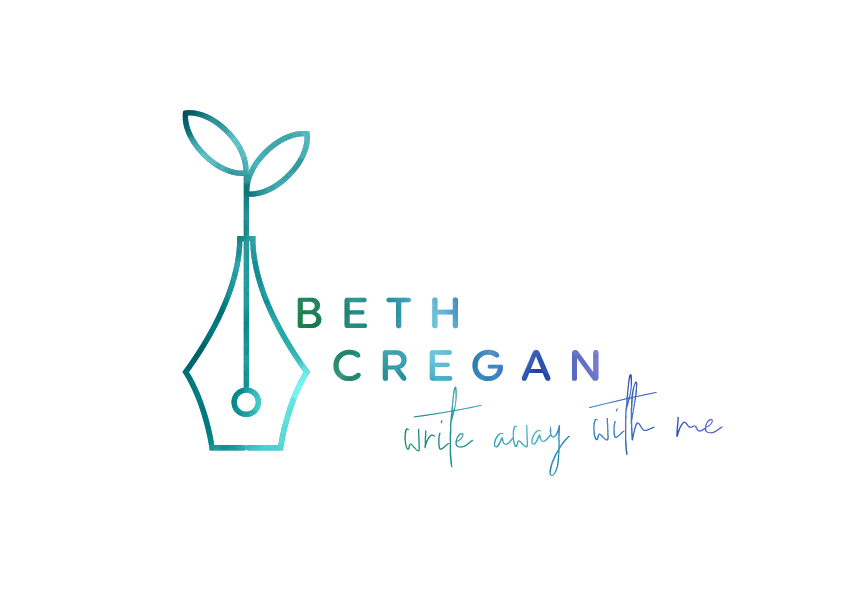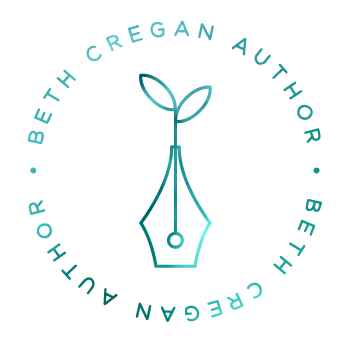Most writers I know are great list makers and it’s easy to see why.
A list is a simple, free organisational tool that’s easily accessible in a wide range of formats and functions. You can use a paper notebook, create your list on any number of digital apps or platforms, use a beautifully designed template or scribble your list on the back of an old envelope.
I use lists every day for organising my daily routine, tracking my goals, dreaming up my bucket list. I love writing list poems, creating lists of writing ideas, character names, books to read, future writing workshops, courses I could launch, stories to tell. I even keep snippets of conversations I hear when I’m out and about. (Yes, I’m a chronic eavesdropper from way back!) If you were to peel back the surface of my life, you would find a patchwork quilt of lists that map the innermost workings of my heart and mind and spirit!
As much as I love making lists, I doubly love crossing items off my list! But some days and weeks, I’m just not feeling it! I fully subscribe to the theory that taking a break and slowing down does more to boost your energy (and your mental health) than pushing against the tide, but my To Do List doesn’t just disappear because I decide to take a well needed break. In fact, it keeps steadily growing along with my sense of overwhelm and negative self-talk. I don’t know about you, but when overwhelm and negativity join forces, I rarely spring into action. Instead, you’ll find me staring out the window wondering where to start or cooking rich complicated recipes (aka procrastibaking), in the hope that feeding my fear and dread will enable me to spring into action. But the good news is you don’t need to sit back and wait patiently for your mood to lift. Planning tools like list making are responsive and adaptable.
If your regular mode of planning is not working for you, embrace where you’re at and start right there. Choose a list to match your mood and current circumstances! Whether you’re depleted, blocked, disappointed with your progress or lacking in motivation, one of the three lists below could kickstart your productivity engine.
1) The Slow Mo List (SML)
Recently in the middle of an ongoing creative slump, I knew I had no choice but to find a way to befriend my low energy level and so, The Slow Mo List was born. It got me out of bed. It got me moving and by the end of the week, I was back in my groove. A SML sweeps in like a much-needed intervention and micro- manages your day. Think of The Slow Mo List as an intense, short-term fix to get you back on track.
Recommended for:
The SML works especially well if you’re recovery from illness or especially depleted and burnt out. It’s for those days when your get up and go has got up and gone.
How To:
The aim of the Slow Mo List is to break down daily tasks into small sequential steps.
Obviously, this means you’ll have way more tasks on your list, but this also means you’ll more tasks ticked off your list and that sets the SML domino effect in motion.
Checking off lots of simple everyday tasks triggers a wonderful feeling of success and accomplishment. This progress boosts your self-esteem and sense of accomplishment which awakens your long lost motivation. The magic of The Slow Mo List is that it rewards you for every small task you get done. I find when I’m struggling with low energy, it doesn’t matter so much what I achieve, it's the sense of achievement itself that reignites my pilot light.
A Slow Mo List in Action:
Your Slow Mo list might start like this:
o Get up
o Shower
o Get dressed
o Make bed
o Have breakfast
o Unpack dishwasher
o Tidy kitchen
o Put on a load of laundry
o Pay invoice
o Send email
o Have a nap
Tips and Tricks:
I keep a Slow Mo Master List template on the Notes app on my phone and I use the checklist function to mark off tasks as I go. That way, it’s always ready when I need it and I don’t have to start from scratch to create my daily list.
If you divide The Slow Mo List into times of day (morning afternoon and evening) it gives structure to your day which is especially helpful when you’re feeling totally overwhelmed.
If you are battling some lurgy or suffering from on ongoing condition that robs you of your precious energy, a SML can be adapted to your circumstances. There’s no pressure here.
Summary
So much of our days are filled with activities and tasks that rarely make it on to a list and we end up feeling like we achieved nothing in a day which isn’t true. Think of the SML as your personal trainer! It not only recognises your tremendous effort but encourages you every step of the way.
2) The Done List (DL)
The Done List is for those days and weeks when your energy levels are stable and you’re getting through your tasks okay, but you just feel ‘meh’! If the Slow Mo List is your personal trainer, the DL is your devoted and loyal cheerleader. It’s designed to lift your mood; spring clean your mindset and get your inner critic off your back.
Recommended for:
The DL is perfect for those glass half empty days when you’re heavily focused on all the things you said you were going to do and haven’t done … yet. Those days when you feel frustrated or plain dissatisfied with what you have achieved so far. It’s also a powerful antidote for disappointment. While TDL doesn’t necessarily help you organise your day, it fills you with a sense of pride which might just kick your planning into gear. The Done List really comes into its own if you’re mid-way through a long-term goal and finding the journey slow and heavy.
How To:
If I’m making a DL, I like to settle in, make myself comfortable, put on the kettle but I’ve also done this list on my phone waiting in a queue and once on my voice memo app while driving so it’s versatile enough to meet you where you are.
Essentially, The DL is a list of all your achievements:
Tasks you have completed.
Goals both big and small that you have achieved,
Obstacles you have conquered along the way.
Circumstances you have survived against the odds.
You may want to contain your list a little by choosing a time frame – The Year 2022 or restrict your list to completed tasks related a central goal – such as writing a book.
If you need a jump start, set a timer. This will galvanise you into action and stop your inner critic chiming in about what deserves to be on your list. Don’t censor your list making at all. Collect all your nitty gritty achievements on TDL.
Top Tips and Tricks:
Rather than creating a once off Done List, try make this an ongoing activity and do it daily, weekly or even monthly to celebrate your wins.
You can use this concept to create an ongoing Grateful List which captures all the things, moments, people and places that light you up and fill you with joy. Research shows that fostering feelings of gratefulness improves your mental health and your mindset.
Consider regularly meeting with a friend to share your Done Lists and reward your commitment to your personal development.
Summary
Essentially, The Done List is a way of mapping out how you have used your time. It invites you to tune into the big picture version of your life and although you may not be as far down the track as you would like, you’ll discover you have achieved much more than imagined.
3) The Rainbow List (TRL)
If long, black and white To Do lists suddenly feel rigid and uninspiring, it’s time to bring a playful whimsical element to your planning and let your inner child run the show. Break out your stationery and create a list your eight-year-old self would have loved - The Rainbow List. This is where colour, symbolism and imagery meet productivity and organisation.
Recommended for:
Rainbow Lists are perfectly suited for those Groundhog Day times of our lives, when you feel like you’re wading through thick mud. Those times when you don’t feel particularly creative or free. Those times when you feel anxious or blocked or when your muse has gone MIA.
How to:
Here are some ideas to get you started:
Firstly, you’ll need a few supplies. Nothing fancy. Just some paper, coloured pens, highlighters, maybe some paints or stickers. You might rustle up some paste or coloured paper.
If this sort of activity is new to you, start by simply colour coding your To Do list.
Add stickers or any other details you fancy. Maybe that’s enough for you.
But if you want to dive a little deeper, you could choose a word or symbol to inspire you. For example, if you are feeling lost or seeking direction and clarity, a compass, a lighthouse, or a north star makes an inspiring metaphor to anchor and guide your planning. Draw your symbol or find a printed image and add it to your page to anchor your planning. What language, memories or experiences do you associate with this image?
You could create a mini vision board, by cutting out words or phrases from magazines that speak to you and adding this to you list.
TRL can be as elaborate or simple as you want, just have fun doing it.
This style of planning engages both sides of your brain so don’t be surprised if new ideas and thoughts naturally rise to the surface as your creativity bumps up against your reasoning and logic.
Tips and Tricks:
You don’t need to be artistically talented to give this style of list making a go.
You also don’t need to be able to draw or paint. Magazines and printed images will serve you well.
If you google Bullet Journaling, you will find a range of hand drawn lettering and details to use for TRL.
I find this style of list making brings me into the present moment. As I focus on the task, I move from my logical, rational thinking to a more expansive, intuitive space. I begin to make connections and see patterns that I couldn’t see clearly before.
Summary
The aim of TRL is to ignite your creativity and loosen you up. Often a ‘disruption’ to your regular planning shifts energy and gives you much needed time to refresh and recalibrate. This planning process invites you to tap into your intuitive mind; the colours you use, the patterns you make, the images you add, all give you valuable data about your internal landscape.
Last words
I’ve experienced countless planning and organisational slumps, especially over the last years of life in the time of Covid and the only silver lining I can see, is that every time I’m down and out, I have another opportunity to see what helps me connect back in with myself. Think small steps. Experiment and mix up your process to see what makes you feel better at the end of the day. Trust yourself. (Oh and make a Done List soon because you deserve to celebrate just how amazing you are! )






















